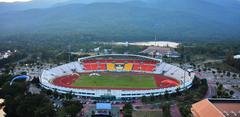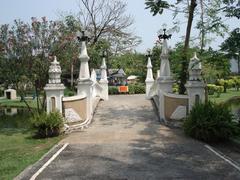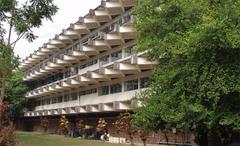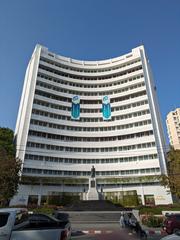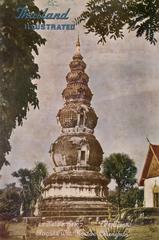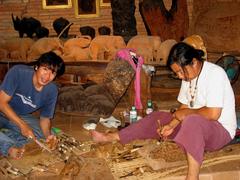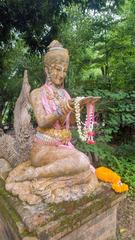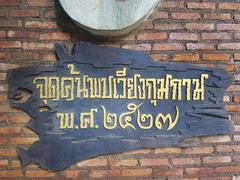
Chiang Mai City Wall: Visiting Hours, Tickets, and Historical Sites Guide
Date: 04/07/2025
Introduction
The Chiang Mai City Wall stands as a proud symbol of Northern Thailand’s Lanna heritage, offering visitors a unique glimpse into centuries of history, architecture, and cultural tradition. Since its construction in 1296 CE by King Mengrai, the wall and its surrounding moat have served not only as fortifications but also as essential elements for flood control, urban planning, and spiritual protection. Today, the wall and its gates form the heart of Chiang Mai’s Old City—a living heritage site bustling with temples, markets, festivals, and daily life.
This detailed guide explores the history and architecture of the city wall, provides practical information on visiting hours and tickets, highlights key attractions and cultural experiences, and offers up-to-date travel tips to help you make the most of your visit (Dakini Translations, Changpuak Magazine, Aleenta, Frequent Traveller).
Table of Contents
- Introduction
- Historical Significance and Origins
- Architectural Features and Surviving Structures
- Visiting Hours, Tickets, and Accessibility
- Top Travel Tips and Nearby Attractions
- Restoration, Preservation, and Modern Importance
- Cultural Events and Living Heritage
- Visitor FAQs
- Conclusion and Travel Resources
- References
Historical Significance and Origins
Chiang Mai, meaning “New City,” was founded in 1296 CE by King Mengrai as the capital of the Lanna Kingdom. The city’s location was strategically chosen to avoid the flooding that plagued its predecessor, Wiang Kum Kam, while still benefiting from proximity to the Ping River for trade and agriculture (Dakini Translations).
The city’s fortified square layout, spiritual orientation, and protective moat were planned according to astrological and religious principles. The four cardinal gates—Tha Phae (East), Chang Phuak (North), Suan Dok (West), and Chiang Mai Gate (South)—were designed for both strategic defense and ceremonial use. Each gate and bastion was believed to be guarded by protective spirits, a tradition honored in modern-day ceremonies and festivals (Changpuak Magazine).
Architectural Features and Surviving Structures
Design and Construction
- City Wall: Originally constructed from brick and laterite, reinforced with earth embankments, the wall formed a near-perfect square enclosing about 1.5 square kilometers (Chiang Mai Bus). The walls reached up to 6 meters in height and 1.5 meters in thickness.
- Moat: A 20-meter-wide moat surrounds the wall, providing both defense and flood management.
- Gates and Bastions: Four main gates—Tha Phae, Chang Phuak, Suan Dok, and Chiang Mai Gate—plus corner bastions (Jaeng Sri Phum, Jaeng Katam, Jaeng Gu Huang, Jaeng Huo Lin). Many original features have been restored, especially at Tha Phae Gate, a major focal point for visitors and events (Aleenta).
Key Surviving Structures
- Tha Phae Gate: The best-preserved and most iconic entrance, often the center of public gatherings and festivals (Two Flashpackers).
- Chang Phuak Gate: Historically significant for military and trade purposes.
- Suan Dok and Chiang Mai Gate: Mark the western and southern boundaries, connecting to ancient roads and trade routes.
- Moat and Parks: The moat is now a scenic walking and cycling route, especially beautiful at sunrise and sunset (Kamala Beach Estate).
Visiting Hours, Tickets, and Accessibility
Visiting Hours
- City Wall and Gates: Open 24 hours a day, year-round, as public historic structures (Frequent Traveller). The best hours for visiting are from 6:00 AM to 9:00 PM for comfort and safety.
- Museums and Temples: Most nearby museums and temples have specific opening hours (typically 8:00 AM–5:00 PM). Confirm details before visiting.
Tickets and Entry Fees
- City Wall and Gates: Free entry, no tickets required.
- Temples and Museums: Some sites, like Wat Phra Singh and Wat Chedi Luang, charge 20–50 THB. Special exhibitions or guided tours at Tha Phae Gate may have extra fees (Chiang Mai Traveller).
Accessibility
- The Old City is mostly flat and walkable, but some wall sections and ramparts are uneven or have steps. Main gates are accessible, but full wheelchair access may be limited. Samlors (tricycle taxis) and tuk-tuks are helpful for those with mobility needs (ABAcademies).
Top Travel Tips and Nearby Attractions
- Getting There: The Old City is just 4 km from Chiang Mai International Airport. Taxi rides cost about 150 THB. Tuk-tuks, songthaews, and bicycles are popular for getting around (Frequent Traveller).
- Best Time to Visit: November–February (cool and dry), evenings or early mornings for cooler temperatures and better light.
- Markets and Food: Don’t miss the Sunday Walking Street Market and daily Warorot Market for local crafts and street food (InThailand.Travel).
- Temples: Must-see temples inside the walls include Wat Chedi Luang, Wat Phra Singh, and Wat Chiang Man.
- Nearby Attractions: Doi Suthep Temple for city views, Nimmanhaemin Road for shopping and cafes, Chiang Mai Night Bazaar for lively nights.
Restoration, Preservation, and Modern Importance
Historical Restoration
The city wall has endured wars, weathering, and urban development. Major restoration projects, especially around the 700th anniversary in 1996, and after recent seismic events, have helped preserve the most significant sections (The Bush Camp Chiang Mai, ASEAN Now). The Fine Arts Department works with artisans to maintain authenticity (Thailand For Visitors).
Cultural and Tourist Importance
The wall remains central to Chiang Mai’s identity, hosting festivals like Songkran, Loy Krathong, and the Flower Festival. Tourist visits support local businesses and artisans, but also bring challenges such as overcrowding and conservation needs (ABAcademies).
UNESCO Aspirations
Since joining the UNESCO Tentative List in 2015, Chiang Mai has intensified preservation efforts and community involvement to safeguard both tangible and intangible heritage (Visit Chiang Mai).
Cultural Events and Living Heritage
The city walls and gates are the backdrop for a vibrant calendar of events:
- Songkran (April): Thai New Year water festival, with water fights and rituals at the moat and gates.
- Loy Krathong and Yi Peng (November): Lantern releases and floating krathongs at the moat.
- Flower Festival (February): Floral parades passing through the gates (Chiang Mai Traveller).
- Sunday Night Market: Street market on Tha Phae Walking Street (Shipped Away).
Temples within the Old City remain active spiritual centers, hosting daily rituals, meditation, and cultural exchanges (Nomadic Matt).
Visitor FAQs
Q: What are the Chiang Mai City Wall visiting hours?
A: The wall and gates are accessible 24 hours a day, year-round. Museums and temples have separate opening hours.
Q: Do I need tickets to visit the City Wall?
A: No tickets are required for the wall or gates. Some museums and temples may charge small entrance fees.
Q: Are guided tours available?
A: Yes, guided walking and bicycle tours are available from local operators, costing 300–600 THB.
Q: Is the area accessible for wheelchair users?
A: Main gates are accessible, but some wall sections have uneven terrain. Samlors and tuk-tuks can assist with mobility.
Q: What are the best spots for photography?
A: Tha Phae Gate, Chang Phuak Gate (sunrise), moat at sunset, and temples like Wat Phra Singh.
Q: When is the best time to visit?
A: Early morning and late afternoon offer cooler temperatures and optimal lighting. Major festivals provide a unique atmosphere.
Conclusion and Travel Resources
Chiang Mai’s City Wall is more than a relic—it is a living heritage, blending centuries-old traditions, spiritual practice, and vibrant community life. Free public access, engaging guided tours, and year-round festivals make it a must-see for every traveler. Visitors are encouraged to be mindful of preservation efforts and to respect local customs when exploring this historical treasure.
To enhance your journey, download the Audiala app for interactive maps, guided tours, and the latest visitor information. Explore related articles on Chiang Mai’s temples, markets, and festivals, and follow us on social media for updates and travel inspiration.
References
- The Ancient Four-Walled City of Chiang Mai and the Kagyu Monlam Jump Ship Cancellation, 2024, Dakini Translations
- Walls and Gates, 2024, Changpuak Magazine
- Historic Gates of Chiang Mai Old City Walls, 2024, Aleenta
- Chiang Mai Guide, 2024, Frequent Traveller
- Chiang Mai Old Town: A Guide to Exploring the Ancient City, 2024, Chiang Mai Bus
- Historical Landmarks of Chiang Mai, 2024, The Bush Camp Chiang Mai
- Chiang Mai Old City, 2024, Thailand For Visitors
- Restoration Rush: Chiang Mai’s Temples Damaged in Myanmar Quake, 2025, ASEAN Now
- Exploring Chiang Mai City Walls and Gates, 2024, Aleenta
- Chiang Mai Old City Walls and Gates, 2024, Chiang Mai Traveller
- Chiang Mai Travel Guide, 2024, Shipped Away
- Development of Cultural Tourism Attraction for Model Creative Tourism Management in the Old City Chiangmai Thailand, 2024, ABAcademies
- Discover Chiang Mai City Wall: Visiting Hours, Tickets and Essential Tourism Guide, 2024, InThailand.Travel



